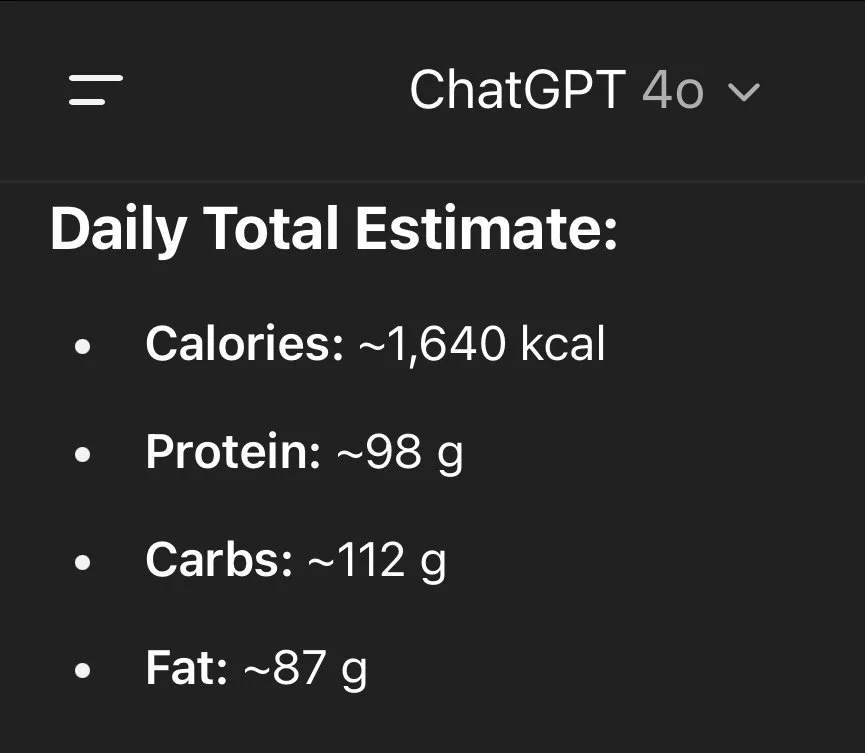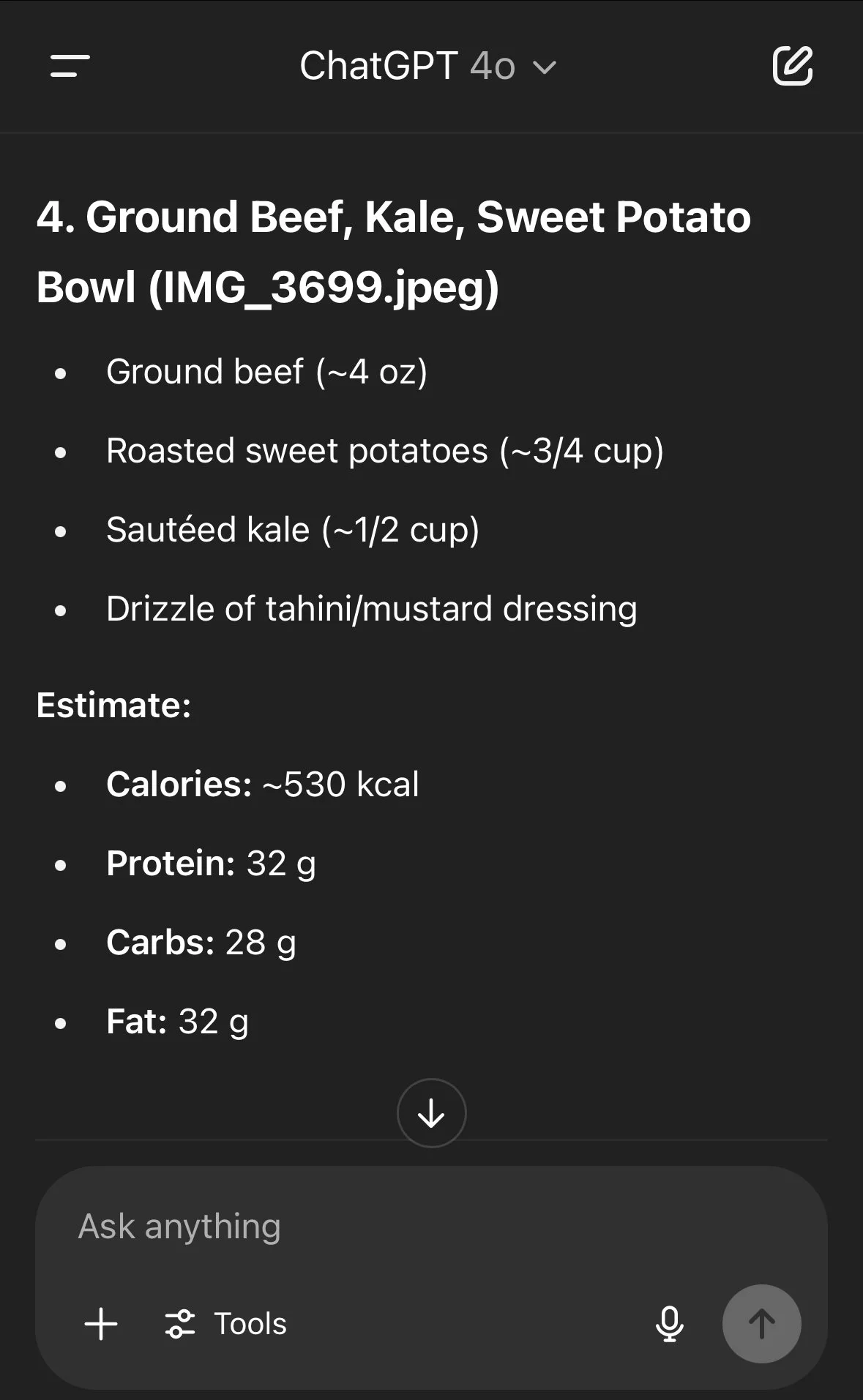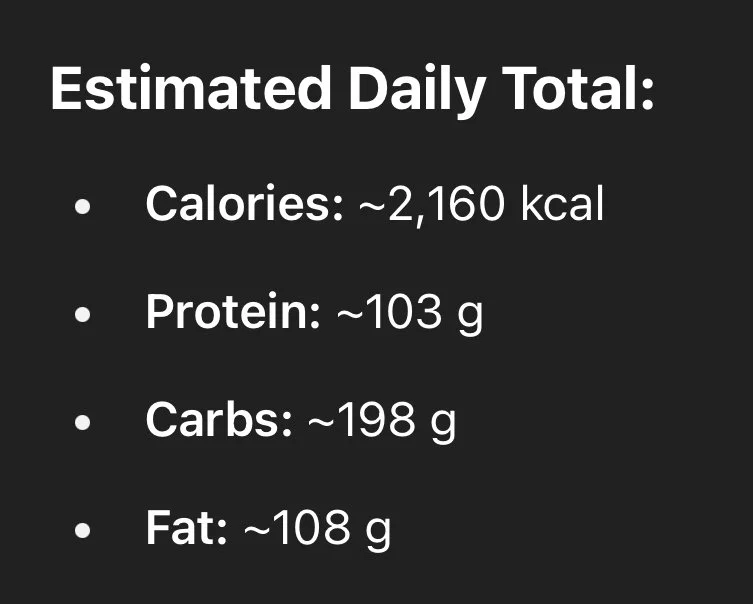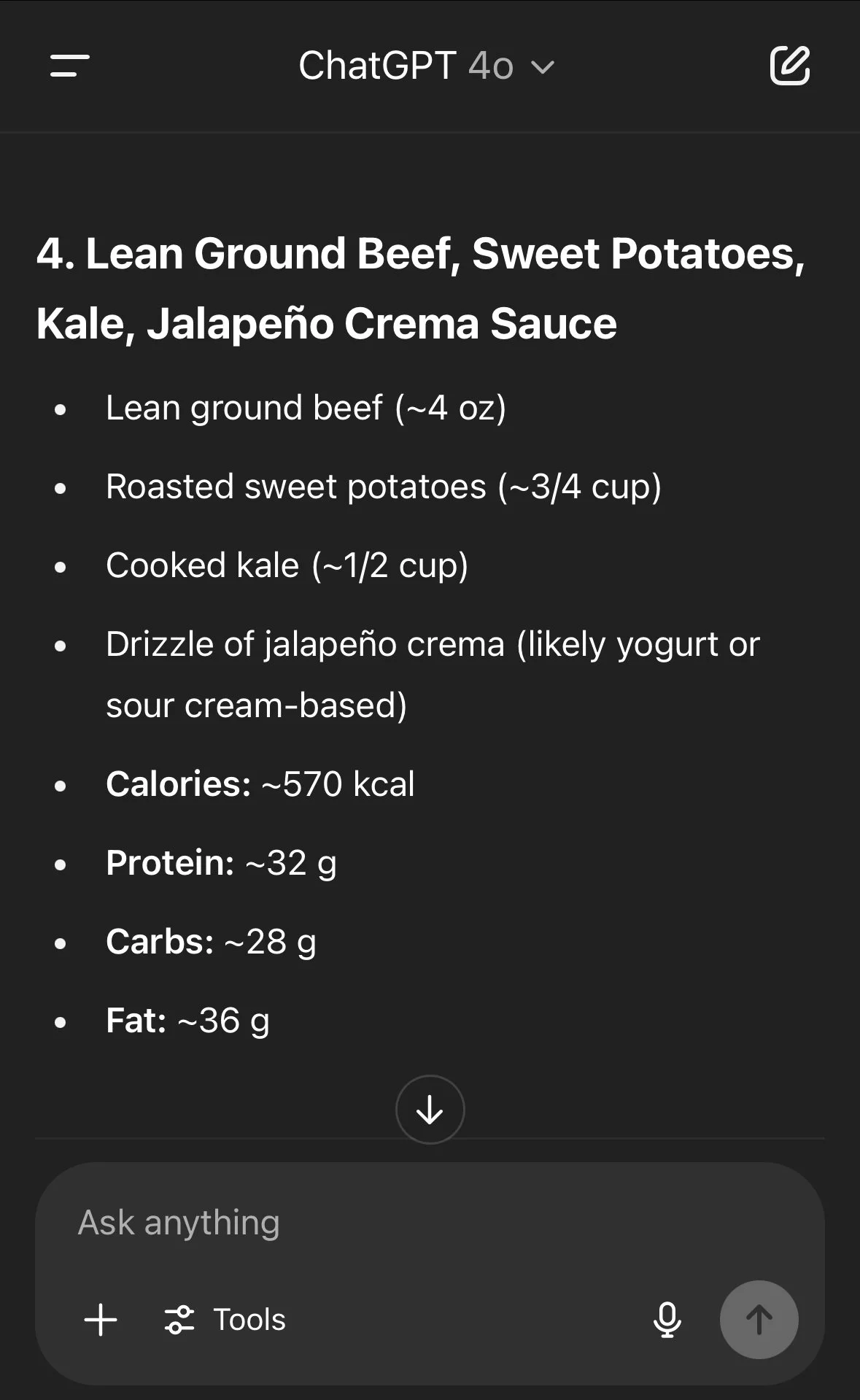I’m a Nutrition Coach, and I asked ChatGPT to Track a Full Day of Eating
Here’s how it did!
Why Track using ChatGPT?
Several new clients have come to me lately using ChatGPT as the sole source of their food tracking and guesstimating.
So I decided to put it to the test: how accurately would ChatGPT track food compared to a nutrition coach?
Here is my tracking accuracy process:
I weigh: all meats, starches, cream cheese, and anything not listed in points 2 and 3
I closely guesstimate: vegetables & latte milk
I track as packaged: things like cookies, chocolates, the breakfast sausage
And here is how I queried ChatGPT:
I uploaded the photos and asked for a macro and calorie breakdown by photo
I then added a description to each photo and asked it to re-evaluate its assessment
What I ate:
I uploaded seven photos cataloging everything I ate during the day (two different latte photos):
How I Tracked it:
Using Cronometer, here was my breakdown:
Note: for the sake of this exercise, some meals and timing are shifted around for illustrative purposes.
Photos Only Breakdown
I uploaded the 7 photos and prompted ChatGPT with this:
Here is everything I ate today, can you give me a macro and calorie estimate for each meal so I can track it? Please break it down by photo.
Net difference:
-268 cals // - 38g Protein
-14% low
ChatGPTs estimated total daily macro breakdown
How ChatGPTs estimated my lunch based on the image only
Notable issues:
Estimated the chocolate truffles as two large chocolate chips
Even though I uploaded two photos of two different lattes, it assumed it was 1
The meat quantity estimated was dramatically off (hence low protein, >25% difference in both meals)
Photos + Description Breakdown:
After that, I decided to describe each photo and ask it to re-evaluate. Here’s what I prompted:
Now, let me give you a description of each photo, and please revise accordingly.
Alyssa's oatmeal bites
2 That's it Chocolate fig truffles
Chicken thigh, sauteed peppers, and onions, rice
Lean ground beef, sweet potato, kale, jalapeno crema sauce
2 eggs, 1.5 chicken sausage, two slices GF toast with cream cheese, a package of raspberries
Honey almond milk latte
Strawberry jam almond milk latte
Here’s how it did:
Net difference:
+252 cals // - 33g Protein
+13% high
ChatGPTs estimated total daily macro breakdown
How ChatGPTs estimated my lunch based on the image + description
Notable issues:
Even though I provided brand names, it didn’t pull up Alyssa’s cookies or That’s It fig truffles
Even though I called out “lean” beef and chicken sausage, it didn’t revise to a leaner estimation of protein sources
The Net Net on Accuracy:
Accuracy:
From a calorie perspective, ranging from -14% to +13% (1,640-2,160 cals) is a big swing
Protein being 24-29% underestimated may discourage you from attempting to hit protein or find it an unattainable
Might you forget to take a photo of something you ate for tracking? It's highly likely. (I used an old photo of my lattes for the same reason!).
These swings raise real concerns regarding effectively using this as a tool for body comp change if AI is the primary tracking device.
Time-Saving:
This is advertised as a time-saving hack, but uploading photos and then further revising with decent descriptions and crosschecking to ensure it tracked everything is time-consuming.
I was able to spend less time tracking in Cronometer than revising and prompting
My Takeaway:
Part of tracking your food is building awareness around what you’re eating, which is a positive part of tracking with ChatGPT.
However, the AI is only as good as its inputs.
This means if you don’t have the foundations to understand varying protein contents (the lean 93/7 beef I used vs the 80/20 it estimated), you may not catch numerous minor errors that cascade into significant variances.
While this software is improving rapidly, here’s what it doesn’t teach you [yet]:
👉 How to preplan and build a plate that helps meet your goals
👉 How to eyeball portions on your own so you can guesstimate without the crutch
👉 How to build the foundations in the first place
Can it be used in a pinch? Absolutely.
Should it be relied on in place of foundations? Absolutely not
A few additional thoughts on why it would be more accurate for me than others using it:
All my foods easily break down visually (it’s not hard to roughly see how much chicken/rice/veggies is on my plate). The more visually difficult to break down or complex the meal is (salads, lasagnas, soups, sandwiches etc), the less accuracy.
This error rate is based on 1900 calories. What if you’re eating 2500 calories? Then the accuracy scales to yield a ~2150- 2900 calorie range, yikes .
I actually remembered to photograph every meal and snack, tbh, it’s my job and I forget that OFTEN.








